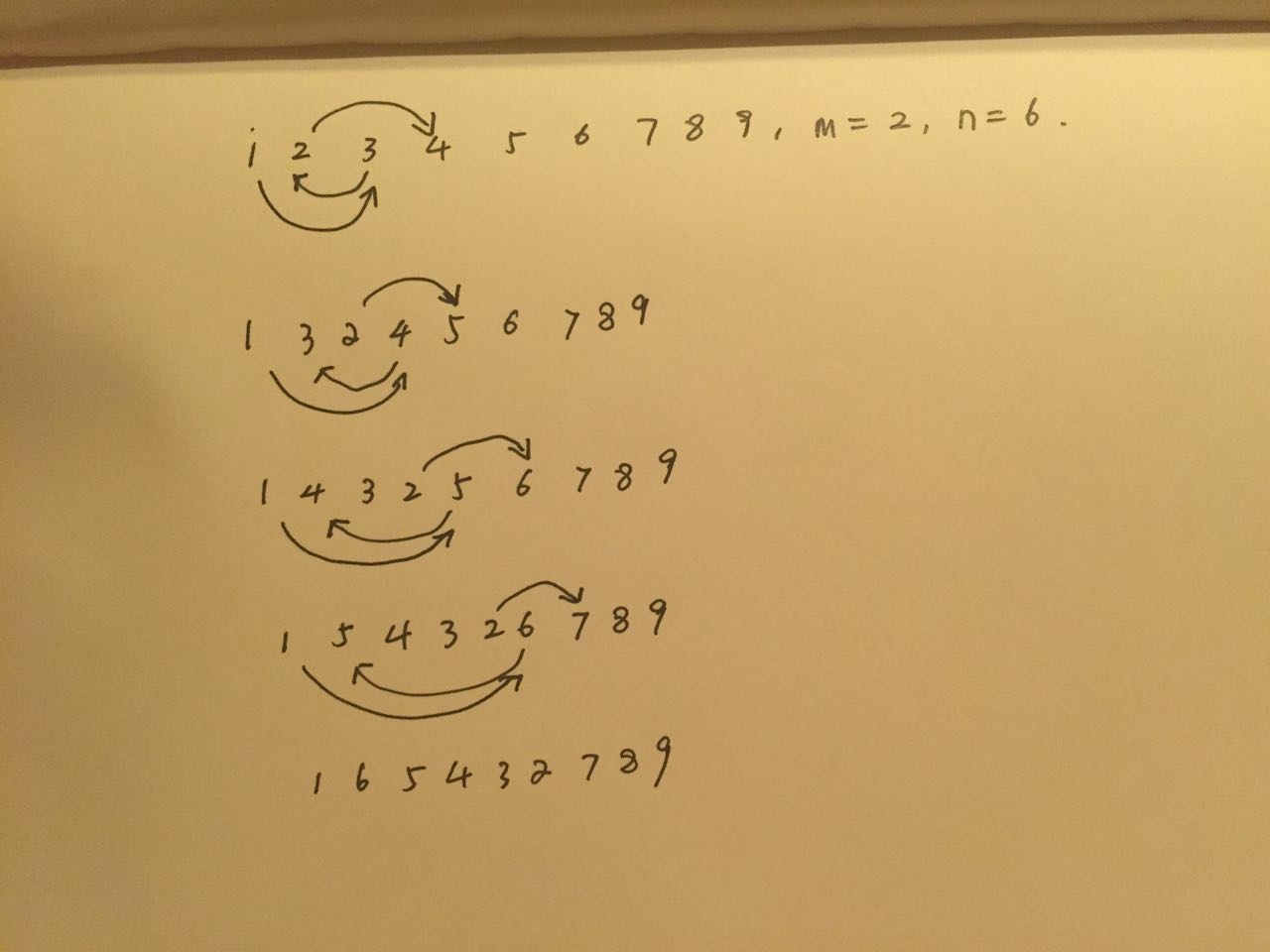#链表翻转
给定一个链表 >1 -> 2 -> 3 -> 4 -> 5 -> 6 -> 7 -> 8 -> 9
实现算法把链表从第 m = 2 位到第 n = 6 位之间的数字进行反转,变成:
1 -> 6 -> 5 -> 4 -> 3 -> 2 -> 7 -> 8 -> 9
实现的过程中不可以申请新的内存地址,时间复杂度是 Θ(n)。
首先是让链表空转 m - 1 位,设定 pHead = 2, 然后让 pPre = 3,也就是会变成最后一位的数字。pCur = 4,这是马上要变成 pHead 下一位的数字。完成 pCur 和 pPre 位置的变换,然后让 pCur 变成一下位,直到 n = 6。 过程图如下:

下面是实现的代码:
1
2
3
4
5
6
7
8
9
10
11
12
13
14
15
16
17
18
19
20
21
22
23
24
25
26
27
28
29
30
31
32
33
34
35
36
37
38
39
40
41
42
43
44
45
46
47
48
49
50
51
52
53
54
55
56
57
58
59
60
61
#include <stdlib.h>
#include <stdio.h>
typedef struct tagSNode{
int value;
struct tagSNode *pNext;
}SNode;
SNode* create(value){
SNode *node = malloc(sizeof(SNode));
node->value=value;
node->pNext=NULL;
return node;
}
void print(SNode *list){
while(list){
printf("%i\n", list->value);
list = list->pNext;
}
}
void rotate(SNode *pHead, int m, int n){
SNode *pCur = pHead->pNext;
int i = 0;
for(;i<m-1;i++){
printf("index is%i\n", i);
pHead = pCur;
pCur = pCur->pNext;
}
SNode *pPre = pCur;
pCur = pCur->pNext;
n--;
SNode *pNext;
for(;i<n;i++){
pNext = pCur->pNext;
pCur->pNext = pHead->pNext;
pHead->pNext = pCur;
pPre->pNext=pNext;
pCur=pNext;
}
}
// given 1→2→3→4→5, m=2,n=4, return 1→4→3→2→5
int main(){
int m = 3;
int n = 6;
SNode *list = create(0);
SNode *tail = list;
for(int i=1;i<9;i++){
tail->pNext = create(i);
tail = tail->pNext;
}
print(list);
rotate(list,m,n);
print(list);
}
